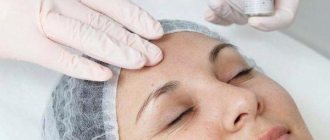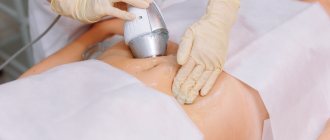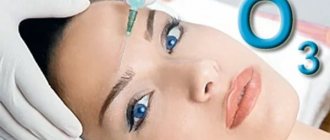Blepharoplasty of the eyelids is a plastic surgery operation aimed at improving their appearance, eliminating age-related manifestations by tightening them, eliminating excess skin and fatty tissue. It is often resorted to when the skin withers, when it loses its plasticity and elasticity, provoking the growth of adipose tissue and the formation of unaesthetic hernias.
Properly performed surgical intervention can eliminate puffiness, bags and wrinkles under the eyes. Thanks to him, the patient regains his freshness of sight and looks younger. Eye blepharoplasty can be performed as a separate operation, or as part of a whole complex.
Blepharoplasty (upper eyelids) - 60,000 - 89,000 rubles.
Blepharoplasty (lower eyelids) - 70,000 - 98,000 rubles.
Blepharoplasty (upper and lower eyelids) - 108,000 - 135,000 rubles.
Transconjunctival blepharoplasty - 52,000 - 85,000 rubles.
Included in the price:
surgery, consultation with an anesthesiologist, anesthesia/anesthesia, hospital stay with meals, dressings, postoperative observation by the attending physician for a month.
30-40 minutes
(duration of operation)
2 days in hospital
Preparing for blepharoplasty
There are several methods for performing eyelid surgery, each of them is a surgical intervention and requires careful preparation.
During the consultation, the plastic surgeon assesses the general condition of the patient, sets a goal, and collects a clinical history.
Remember that such a serious operation as blepharoplasty should be performed exclusively by a competent doctor, in a clinic where there is all the necessary equipment.
Before the operation, it is necessary to pass all the necessary tests and undergo certain examinations.
- Blood chemistry;
- Analysis of urine;
- Information about the patient’s clinical history;
- Consultation with an ophthalmologist
- If the patient has diseases, consult the necessary specialists.
Please note that swelling can be caused by pathologies of internal organs. In case of diseases of the thyroid gland, dysfunction of the liver and kidneys, edema serves as a signal for diagnosing the disease.
Even after surgical elimination of this type of swelling, it can be activated again after a certain period of time. For this reason, a thorough examination of the patient's pathological history is of paramount importance.
During your consultation with your blepharoplasty surgeon, be as clear as possible. The positive outcome of the operation and the absence of complications directly depend on this.
What to expect in the first days
You should not expect instant results immediately in the first days after the intervention. During the first time after the operation, natural postoperative phenomena will be observed - swelling and bruising. The peculiarity of edema is that it does not form immediately after the intervention, but in the following days, increasing gradually. There is no need to be afraid of this; this phenomenon is absolutely normal and accompanies every surgical intervention.
In the first days, pain may also appear. To cope with them, the surgeon will prescribe painkillers. In addition to painkillers, your doctor may prescribe other medications, such as antibiotics to prevent infection or ointments to speed up the resolution of swelling and bruising. It is important to remember that purchasing medications on your own without consulting a doctor is unacceptable. Self-medication can have the most negative impact on the result.
Only a doctor can prescribe medications or auxiliary drugs.
Contraindications to blepharoplasty surgery
If you are determined to undergo surgery, you need to undergo a full check and set a day for the procedure.
Contraindications are conventionally divided into temporary and absolute. In case of temporary ones, it is possible to carry out a correction after eliminating the clinical situation; in the second case, the operation will be refused.
In addition to surgery, there are alternative ways to eliminate eyelid defects.
Main contraindications to the operation:
- Period of menstruation in women;
- Dry eye syndrome;
- High or low blood pressure;
- Severe diseases of internal organs and systems;
- Disturbances in the functioning of the endocrine system;
- The presence of an inflammatory process in the body;
- Oncology;
- Diseases of the hematopoietic system;
- Inflammation of the mucous membrane of the eye or soft tissues of the eyelids;
- Kidney and liver diseases;
- Diabetes mellitus of any type
Important! The operation will not help get rid of swelling under the eyes if they are caused by decreased functioning of the kidneys and adrenal glands.
Before surgery, it is necessary to conduct an examination by highly specialized specialists to exclude the presence of serious pathologies in the patient.
The list of prohibitions for eyelid correction also depends on the method of blepharoplasty. Below we will consider contraindications for each type of intervention. div id=”content_rb_46227″ class=”content_rb” data-id=”46227″>
Results and side effects
If you decide to have blepharoplasty, then do not expect quick results; most often, changes begin to occur on the thirtieth day after the operation. In some cases, the recovery process can take up to two months.
One of the most common concerns of people who decide to have this operation is: will it somehow affect their vision? Can surgery cause vision impairment or ophthalmic diseases?
If the operation is performed correctly, there should be no negative consequences. Blepharoplasty itself does not change vision. But, most doctors recommend performing this procedure once!
Contraindications for upper eyelid blepharoplasty
When carrying out correction using this method, an incision is made in the upper part of the eye, which will then be hidden by a natural fold on the eyelid. If the operation is successfully performed, such a seam will be practically invisible even on closer examination.
Prohibitions for upper blepharoplasty:
- liver and kidney pathologies;
- diabetes;
- intolerance to anesthesia;
- increased intraocular pressure;
- diseases of the cardiovascular system;
- conjunctivitis;
- pathologies of the respiratory system;
- the presence of an inflammatory process in the body;
- diseases of the endocrine system;
- nervous system disorders
The operation is not performed if there are pathologies in the anatomical structure or in case of injury.
How the operation works:
The duration of blepharoplasty depends on the scope of the operation and takes up to 2 hours. Removal of excess eyelid skin and fatty hernias under the eyes can be performed using various methods. Excision of excess eyelid skin is performed in a standard manner: on the upper eyelids, the incision is made in the natural crease, and on the lower eyelids, under the eyelash line. Removal of fatty hernias under the eyes can be performed in two different ways. Most plastic surgeons remove fat hernias through incisions to remove excess eyelid skin. Removal of inferior fat hernias through the conjunctiva is often performed. This surgical technique is ideal when it is necessary to remove fatty hernias, but removal of excess eyelid skin is not required (the so-called “bags”, “fatty hernias” under the eyes). The operation gives an excellent cosmetic effect and does not leave any scars on the skin.
The blepharoplasty operation ends with the application of intradermal removable sutures after excision of excess eyelid skin. Despite the small volume, this operation is very responsible, so the plastic surgeon must have sufficient experience and skill.
Often, eyelid surgery is an integral part of anti-aging facial surgery and is performed in conjunction with check-lifting and facelifting. In some cases, lipofilling of the upper or lower eyelids (injection of one’s own fat from other areas of the body) helps achieve good aesthetic results.
Lower blepharoplasty: contraindications
Correction of the lower eyelid is carried out in patients over 35 years old, when age-related changes in appearance appear. In addition, indications for lower eyelid surgery include anatomical and pathological eye defects that interfere with the normal functioning of the organ of vision.
Contraindications to lower eyelid blepharoplasty include:
- dry eye syndrome caused by disruption of the lacrimal glands;
- increased intraocular pressure;
- disruption of the cardiovascular system;
- menstruation;
- diabetes mellitus of any type;
- increased blood clotting;
- oncological diseases;
- hypertension;
- thyroid disease.
Due to the fact that the operation will affect the soft tissue along the lower edge of the eye, such blepharoplasty requires a special approach. Before performing lower eyelid correction, doctors recommend that you familiarize yourself with alternative methods of surgical intervention that will be less traumatic.
If the solution to the problem is possible only in this way, it is necessary to schedule a day for surgery.
Indications for this surgical intervention
- flabby muscles;
- “drooping eyelid”;
- “bags under the eyes”;
- “heavy eyelid.”
But these are not all indications for blepharoplasty. As you already understand, this type of operation specializes in changing the shape of the eyes and eyelids. Mostly, women with age-related changes in the eyelids turn to blepharoplasty, since aging most quickly affects this area of the face. But it is also done by girls who are dissatisfied with the shape and shape of their eyes.
Prohibitions on performing circular blepharoplasty
Circular correction is a radical method of eliminating changes in the eye area caused by age. The operation is performed under local anesthesia.
Eyelid surgery can also be performed under general anesthesia, if the clinic has a place for the patient’s postoperative stay, qualified anesthesiologists, and an intensive care unit.
Surgery is performed on the upper and lower eyelids. However, despite the fact that circular blepharoplasty is a simple and short-term operation, there are certain contraindications to its implementation:
- age less than 20 years;
- nervous and mental disorders of various etiologies;
- the patient has hemorrhoids;
- impaired communication with the patient due to deafness or muteness;
- low iron levels in the blood, hypotension;
- increased sensitivity to anesthesia;
- tissue infections, deformations at the site of blockade;
- the presence of an inflammatory process in the body, sepsis.
Rehabilitation period
When the intervention is performed under local anesthesia, the patient does not need to stay in the clinic. After 1 hour he goes home with recommendations.
The first three days after classical surgical correction, swelling and bruising are observed. It’s better to take care of yourself and reduce eye strain - don’t read, don’t watch TV, limit your work on a laptop.
Sutures require removal within 5-7 days. Then you can already apply makeup and even go to work. After 14 days, visible traces of the operation - swelling, bruises - disappear. The final result is assessed after 1 month.
Rehabilitation after the transconjunctival sutureless method – 3 days. No bruising or swelling. If the patient had surgery on Friday, he can go to work on Monday.
Laser blepharoplasty: contraindications
The essence of this correction is laser exposure to the problem area around the eyes.
This modern technique is characterized by low trauma, an easier rehabilitation period, and eliminates the risk of possible bleeding. This type of blepharoplasty is not suitable for everyone; there are certain limitations:
- infections;
- blood diseases;
- failure in the hormonal system;
- diabetes mellitus of varying severity;
- cancer;
- the presence of an inflammatory process in the body.
Laser eyelid correction is the most gentle way to eliminate problems in the orbital area. Before performing the operation, it is necessary to conduct a full examination for possible contraindications to the procedure.
When is it not necessary to have blepharoplasty?
In fact, in addition to contraindications, there is another important factor. Blepharoplasty does not need to be done when it is not needed!
Don't try to look for imperfections in yourself. Don’t go after a fly with a gun (I’m talking about barely noticeable facial wrinkles on thirty-year-old girls). Always think twice and talk to your doctor. You may not need surgery.
Follow the link and book a consultation with me. I will be happy to answer your questions and dispel your fears before surgery!
Contraindications to transconjunctival plastic surgery
This technique has appeared relatively recently in plastic surgery. The correction is carried out using an incision in the conjunctiva of the eye. During such an operation, the organ of vision is not damaged, soft and mucous tissues are not seriously damaged. The rehabilitation period after such surgery is easy, with no complications. The operation is not performed on patients with the following indications:
- intraocular pressure;
- dryness of the sclera of the eye;
- HIV, other immunodeficiency conditions;
- menstrual bleeding;
- hypertension;
- failure of the endocrine system;
- oncology.
No plastic surgeon can give a 100% guarantee of a successful outcome of the operation. During anesthesia and in the postoperative period, the body may behave differently, it depends on the individual characteristics of the patient. To minimize negative consequences, the most complete examination of the body is necessary before surgery. Most complications after unsuccessful blepharoplasty lead to reoperation.
Choosing a qualified plastic surgeon and a reputable clinic will reduce the risk of unpleasant complications to zero. Correct behavior of the patient during the rehabilitation period and compliance with all recommendations of the attending physician will help to avoid troubles.
If you are not sure that you meet all the safety requirements, it is worth considering non-surgical eyelid blepharoplasty methods.
Type 1. Aesthetic risks and potential complications
Some risks of eyelid surgery are purely aesthetic, such as scarring or possible asymmetry. Almost all surgeries involve scarring after the procedure, and although eyelid scars are often subtle and hidden in the creases of the eyelids when the eyes are open, there is a risk of more visible scarring depending on the individual characteristics of the skin tissue. Cosmetic risks also include unevenness of the eyelid or a noticeable hollow in the eyelid area after surgery.
The photo shows the patient before and after upper fat-sparing blepharoplasty and lipofilling of the lower eyelids.
Lower blepharoplasty also has the risk of removing too much tissue, which subsequently leaves a “hollow” appearance of the lower eyelid. In this case, lipofilling of the lower eyelids—transplantation of the patient’s own fat tissue—can help. Such points are always discussed with the surgeon before surgery! At the end of the article, be sure to watch the video - how lipofilling of the lower eyelids is carried out, what is the volume and density of the injected fat, where are the injection points and to what depth. Plastic surgeon D.R. Grishyakyan tells everything in detail.
Blepharoplasty requires a very high level of surgeon skill to avoid serious problems with the appearance, vision and function of the eyelid after surgery.
Rehabilitation
On average, rehabilitation after blepharoplasty lasts 3–4 weeks. The more gentle the method was used, the faster the recovery. So, with the injection technique, rehabilitation lasts up to 5 days.
Any manipulation in the eye area does not pass without leaving a trace, so in the first days the patient experiences side effects (swelling, itching, blurred vision and hematomas), which are considered natural. They can be classified as pathological processes only if the intensity of symptoms does not decrease after 3 weeks.
In order to speed up rehabilitation and reduce the risk of complications after plastic surgery, it is recommended to adhere to the following recommendations:
- use drops for a week to moisturize the eyes, have antibacterial and anti-inflammatory effects;
- exclude any visual stress in the first 7 days;
- treat the eyelid with ointment from the outside for 10 days;
- after two weeks, begin applying a healing agent to the correction area until the tissue is completely restored;
- You should not use lenses or even glasses for two weeks;
- limit physical activity and head tilts for a month;
- Avoid exposure to “strong” sun for 6 months;
- exclude exposure to ultraviolet radiation on the eyes (including visiting a solarium);
- Do not use decorative cosmetics for the eyes and entire face in the first 30 days.
The tips listed apply primarily to serious interventions. However, with a non-surgical technique, most recommendations can serve as a prevention of negative consequences after blepharoplasty.









